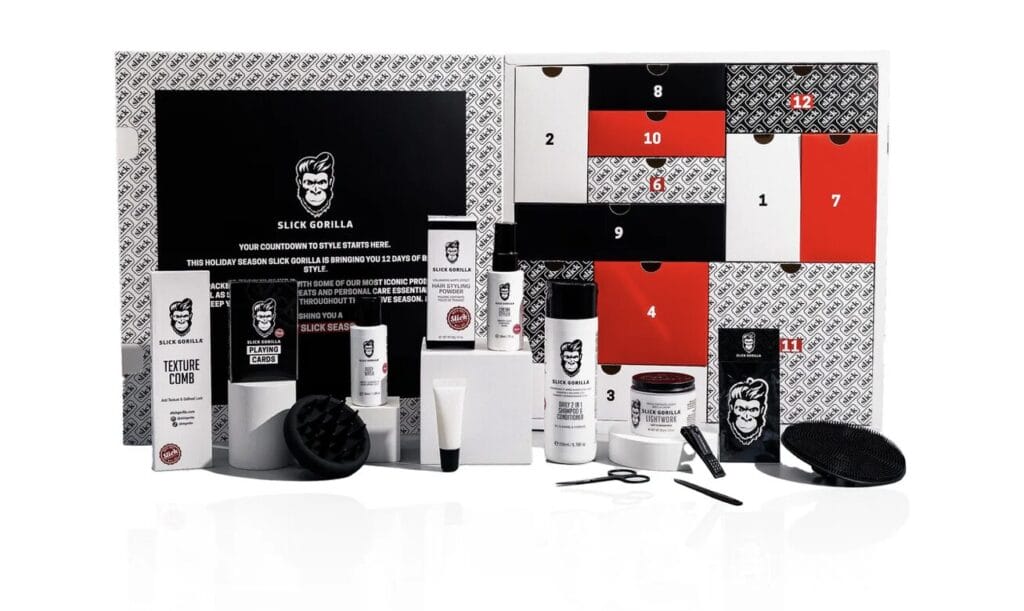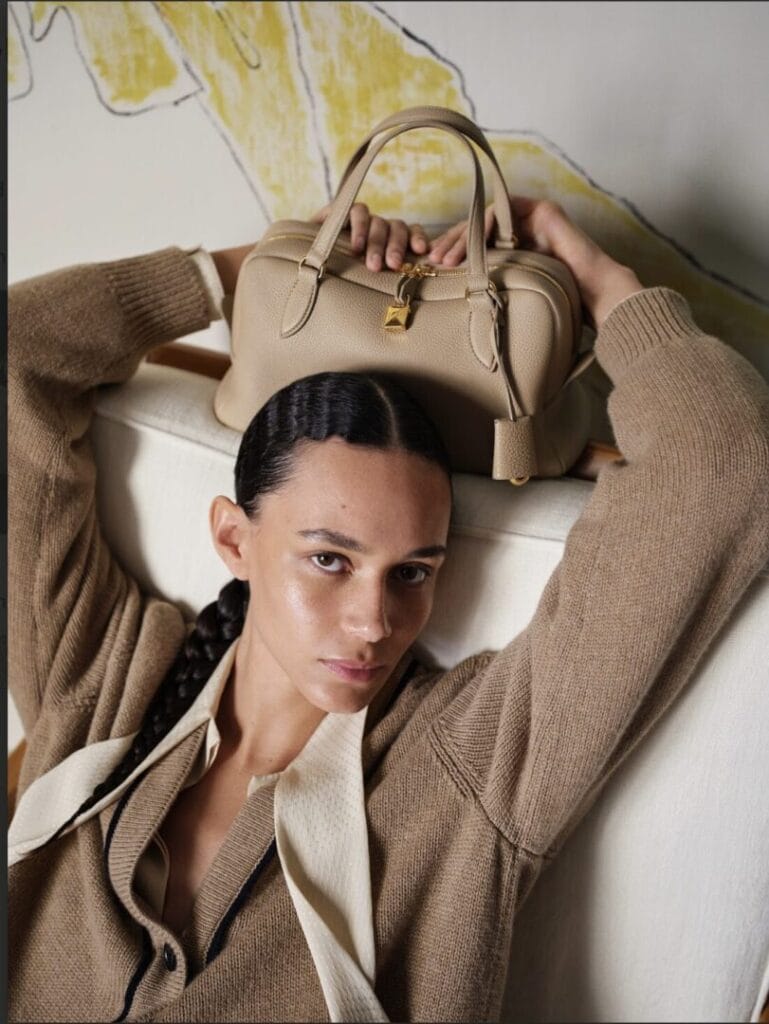Outerwear, as we know it today, has a storied history rooted in humanity’s earliest attempts to protect themselves from the elements. Long before fashion became a global industry, the very first “outerwear” was likely animal skins worn by our primitive ancestors. These early garments were functional, providing warmth and protection in harsh climates. But as society evolved, so did the need for more sophisticated and specialized outerwear.
The Dawn of Outerwear: From Survival to Style
The concept of outerwear as we recognize it today began to take shape during the Industrial Revolution. The first known brand to produce outerwear was Aquascutum, established in 1851 in England. Aquascutum created waterproof coats, which were revolutionary at the time. These coats were designed to protect against the unpredictable British weather and became a staple in both civilian and military wardrobes. This marked the beginning of outerwear’s transformation from mere protective gear to a fashion statement.
Functionality Meets Fashion: The Technological Revolution in Outerwear
Today, outerwear is no longer just about keeping warm or dry; it’s about merging functionality with fashion, where high-tech fabrics and innovative construction methods play a pivotal role. With the advent of technology, the fashion industry has witnessed groundbreaking developments in materials science and manufacturing techniques.
The Evolution of Outerwear: From Primitive Protection to High-Tech Fashion
Leading technology companies, such as Gore-Tex, have pioneered waterproof, breathable fabrics that are now standard in high-performance outerwear. Another example is PrimaLoft, a synthetic insulation material that provides warmth without the bulk of traditional down. These innovations are the result of extensive research and development, with the apparel industry investing billions annually to push the boundaries of what is possible.
Meeting Modern Demands: The Consumer’s Quest for Functionality and Sustainability
Recent developments in technology have enabled brands to meet the growing consumer demand for apparel that is not only functional but also lightweight and sustainable. Consumers today expect their outerwear to offer high performance, whether they’re scaling mountains or navigating city streets. The rise of eco-consciousness has further pushed brands to adopt sustainable practices in their production processes, from using recycled materials to reducing their carbon footprint.
Here are five modern technological developments that are revolutionizing outerwear:
- Smart Fabrics: Integrating technology with textiles to monitor body temperature and adjust insulation levels accordingly.
- Laser-Cut Seams: Providing precision in garment construction, reducing bulk, and enhancing waterproofing.
- 3D Knitting: Creating seamless garments that reduce waste and offer a perfect fit.
- Recycled Insulation: Utilizing post-consumer waste to create high-performance insulation materials.
- Waterless Dyeing Technology: Reducing water usage and chemical runoff in the dyeing process, making it more environmentally friendly.
Parajumpers: A Case Study in High-Tech and High-Fashion Outerwear
Founded in 2006 by Italian designer Massimo Rossetti, Parajumpers has become synonymous with luxury outerwear that blends innovation with fashion. Inspired by the real-life Parajumpers of Anchorage, Alaska, the brand’s collections are crafted from durable materials and filled with extra down for maximum warmth.
Parajumpers targets a demographic that values both functionality and style, appealing to urban adventurers and fashion-forward individuals alike. The brand’s psychographic includes those who appreciate the fusion of high-tech features with timeless design. This market segmentation is targeted through a combination of digital marketing, influencer partnerships, and a strong retail presence in key luxury markets.


Sustainability at Parajumpers: A Commitment to the Future
Parajumpers has made significant strides in adopting sustainable practices, recognizing the increasing demand for environmentally responsible products, especially among younger generations like Gen Z and Gen Alpha. Here are five reasons why these generations are driving the demand for sustainable products:
- Environmental Awareness: Younger consumers are more conscious of the environmental impact of their purchases.
- Ethical Production: They prefer brands that ensure fair labor practices and ethical sourcing of materials.
- Transparency: Brands that are open about their supply chains and sustainability efforts are favored.
- Innovation: They are attracted to products that use cutting-edge technology to reduce environmental impact.
- Long-Term Value: Sustainable products are seen as investments that offer long-term benefits, both for the planet and for personal use.
Revenue Growth in the Outerwear Industry
The global outerwear industry is a multi-billion-dollar market, with significant year-on-year growth. Recent reports suggest that the industry generates over $100 billion annually, with the highest growth margins seen in the high-performance and luxury segments. This growth is driven by increasing consumer demand for versatile, stylish, and technologically advanced outerwear that can be worn in various settings, from outdoor adventures to urban environments.

Editorial Magazine Interview with Parajumpers: An Exclusive Conversation with Brand Manager Cristina Paulon
In the dynamic world of high-performance outerwear, Parajumpers stands out as a brand that flawlessly integrates functionality with fashion. Established in 2006, Parajumpers was inspired by the elite U.S. Air Force rescue squad known as “Parajumpers,” aiming to create gear that could endure extreme conditions while maintaining a stylish edge. In this exclusive interview, Joseph DeAcetis sits down with Cristina Paulon – Brand Manager of Parajumpers to explore the brand’s fascinating origins, dive into the latest trends and innovations for Fall/Winter 2024, and uncover the unique elements that differentiate Parajumpers in a highly competitive market. Join us as we delve into the journey of Parajumpers, its commitment to sustainability, and what makes their outerwear an essential addition to any wardrobe this season.
Joseph DeAcetis: Parajumpers has established itself as a leader in performance outerwear with a rich history. Can you share the origins of the brand and how it has evolved over the years to become a favorite among outdoor enthusiasts and celebrities alike?
Cristina Paulon – Brand Manager: Parajumpers is known for its high-performance outerwear, combining functionality, durability, and style. The brand was founded in 2006 by the Italian Paulon family, inspired by an encounter with a member of the 210th Rescue Squadron, an elite U.S. Air Force unit known as “Parajumpers” or PJs. These highly trained rescue specialists operate in extreme conditions, and their gear reflects the need for durability, protection, and versatility. Our mission was to create outerwear that could withstand the harshest environments while maintaining a sense of luxury and style. This led to the development of our signature jackets, recognized for their technical features like water-resistant materials, high-quality down insulation, and multiple functional pockets. Over the years, Parajumpers has grown from a niche outerwear brand into a global fashion phenomenon, favored by both outdoor enthusiasts and style-conscious celebrities.
Joseph DeAcetis: Outerwear trends are constantly shifting. What are the key trends in outerwear that Parajumpers is focusing on for Fall/Winter 2024, and how do these trends influence your design and production processes?
Cristina Paulon – Brand Manager: For Fall/Winter 2024, Parajumpers is focusing on several key trends that merge performance with style:
- Sustainability and Eco-Friendly Materials: We are committed to using sustainable fabrics and practices, including low-impact coloring and treatments, which guide our sourcing and manufacturing processes.
- Tech-Enhanced Functionality: Consumers want more than just warmth; they want advanced features like better insulation, breathability, and weather resistance, which we integrate through technical fabrics and innovative construction methods.
- Versatility and Adaptability: Our designs emphasize adaptability, with features like detachable linings and adjustable hoods, ensuring that our outerwear is both functional and stylish across different environments.


Joseph DeAcetis: Fabrics are a crucial element in creating high-performance outerwear. Can you tell us about the materials Parajumpers uses in its collections and how they contribute to the functionality and durability of your products?
Cristina Paulon – Brand Manager: We carefully select materials that meet both aesthetic and functional standards. Key characteristics include:
- Lightweight yet durable fabrics like high-density nylon and polyester for breathability and warmth.
- Down insulation sourced responsibly, ensuring both ethical standards and exceptional thermal efficiency.
- Eco-friendly and recycled materials that reduce environmental impact without compromising on performance.
- Technical performance treatments like water repellency and stretch materials, ensuring comfort and practicality in all conditions.
Joseph DeAcetis: Sustainability is a growing concern in the fashion industry. What steps is Parajumpers taking to incorporate sustainable practices in your production, materials, and overall business model?
Cristina Paulon – Brand Manager: Sustainability is a top priority for us. Our down insulation, for example, is sourced as a by-product of the food industry, with certifications from third-party bodies like IDFL and EDFA to ensure animal welfare. We are also integrating recycled and biodegradable fabrics into our collections, and we focus on creating long-lasting products to minimize waste.
Joseph DeAcetis: Where are Parajumpers products manufactured, and how does the brand ensure that its commitment to quality and craftsmanship is upheld throughout the production process?
Cristina Paulon – Brand Manager: Our products are primarily manufactured in Southeast Asia, Italy, and other European countries. We maintain our commitment to quality by overseeing the entire production process—from selecting premium materials to working with skilled manufacturers who specialize in technical outerwear. Rigorous quality control checks at each production stage ensure that every product meets our high standards.


Joseph DeAcetis: Who is the primary demographic for Parajumpers, and how does the brand cater to the needs and preferences of this audience, whether they’re outdoor enthusiasts or fashion-forward individuals?
Cristina Paulon – Brand Manager: Our primary demographic includes both outdoor enthusiasts and fashion-forward individuals across all age groups. For outdoor enthusiasts, we offer technical features like water-resistant materials and high-performance insulation. For fashion-forward individuals, we blend contemporary trends with sleek silhouettes and bold colors, positioning Parajumpers as a luxury brand that offers style, quality, and versatility.
Joseph DeAcetis: In the competitive world of performance outerwear, who do you see as Parajumpers’ main competitors, and what differentiates your brand from the others in this space?
Cristina Paulon – Brand Manager: Our main competitors include Canada Goose, Moncler, The North Face, and Stone Island. What sets Parajumpers apart is our unique design aesthetic, which combines military-inspired elements with functional features, creating a distinctive look that appeals to both fashion-conscious consumers and outdoor enthusiasts. Our meticulous attention to detail, reinforced seams, and versatility make our outerwear stand out in a crowded market.


Joseph DeAcetis: Every brand faces challenges in the market. What are some of the current challenges Parajumpers is encountering, and what strategies are you implementing to overcome these obstacles and continue to grow?
Cristina Paulon – Brand Manager: Expanding our global presence, particularly in the US, Canada, and Southeast Asia, is one of our main challenges. We are also focused on increasing sales across multiple product categories and direct channels like e-commerce. To overcome these challenges, we are strengthening our distribution networks, enhancing our digital presence, and exploring new market opportunities.
Joseph DeAcetis: The Fall/Winter 2024 collection is receiving a lot of attention. What are the standout pieces in this collection, and what trends do they reflect for the upcoming season?
Cristina Paulon – Brand Manager: Standout pieces in the Fall/Winter 2024 collection include:
- Technical Parkas: Advanced insulation and weather-resistant materials, reflecting the trend of functional fashion.
- Oversized Puffers: Especially in womenswear, featuring bold shapes and rich, earthy tones.
- Shearling Jackets: Combining luxury with practicality, catering to the growing desire for comfort without sacrificing style.
- Layered Looks: Emphasizing versatility with lightweight puffers and mid-weight overshirts that cater to different climates and personal styles.
Joseph DeAcetis: Finally, what would you say is the most intriguing or unique aspect of the Fall/Winter 2024 collection that sets it apart from previous collections and makes it a must-have for customers?
Cristina Paulon – Brand Manager: The most intriguing aspect of the Fall/Winter 2024 collection is the seamless blend of functional luxury and bold silhouettes. This season, we’ve pushed the boundaries with innovative materials and designs that not only perform in extreme conditions but also make a strong visual impact. Whether it’s the oversized puffer jackets or the technical parkas, each piece in the collection reflects our commitment to delivering both style and performance, making it a must-have for anyone seeking the best in outerwear this season.
A Personal Review: Parajumpers FW24 Collection
As a fashion expert, I am particularly impressed by Parajumpers’ Fall-Winter 2024 collection. The brand has once again managed to balance functionality with high fashion, offering a range of garments that are as stylish as they are practical. The use of high-tech fabrics, such as laminated three-layer materials and Cordura ripstop, ensures that each piece performs well in extreme conditions while maintaining a sleek, modern aesthetic.
The sustainable initiatives taken by Parajumpers are also commendable, reflecting a deep commitment to reducing environmental impact. The collection’s emphasis on recycled materials and innovative production techniques aligns with the growing demand for eco-friendly products, making Parajumpers a brand that not only looks good but also feels good to wear.

Conclusion: The Future of Outerwear Lies in Technology and Sustainability
In today’s fast-paced world, outerwear brands must stay relevant by continually infusing the latest technology into their apparel and adopting sustainable practices. The fusion of fashion and functionality, as exemplified by Parajumpers, represents the future of outerwear. Brands that prioritize innovation, sustainability, and style will not only survive but thrive in an increasingly competitive market, offering consumers the best of both worlds: great style and unmatched functionality.
About the Author:
Joseph DeAcetis is a visionary in the world of fashion, renowned as the best wardrobe stylist and art director of his generation. His impressive accolades and unmatched expertise set him apart in the industry. Joseph covers the intersections of style, culture, art, and fashion, with a particular emphasis on the evolving status of menswear.
Throughout his illustrious career, Joseph has penned award-winning columns for top-tier publications such as Esquire, People Magazine, Robb Report, and Playboy. His profound insights and engaging narratives have made him a leading voice in fashion journalism.
Most recently, Joseph served as the creative fashion director for Forbes Media, where he excelled as both a critic and reporter. His extensive body of work highlights the importance of dressing for success and explores how technological advancements are reshaping the fashion industry. Joseph’s authoritative yet approachable voice continues to inspire and influence fashion enthusiasts worldwide.
Comments, questions, or feedback? message me at stylelujo.com
Save Article








